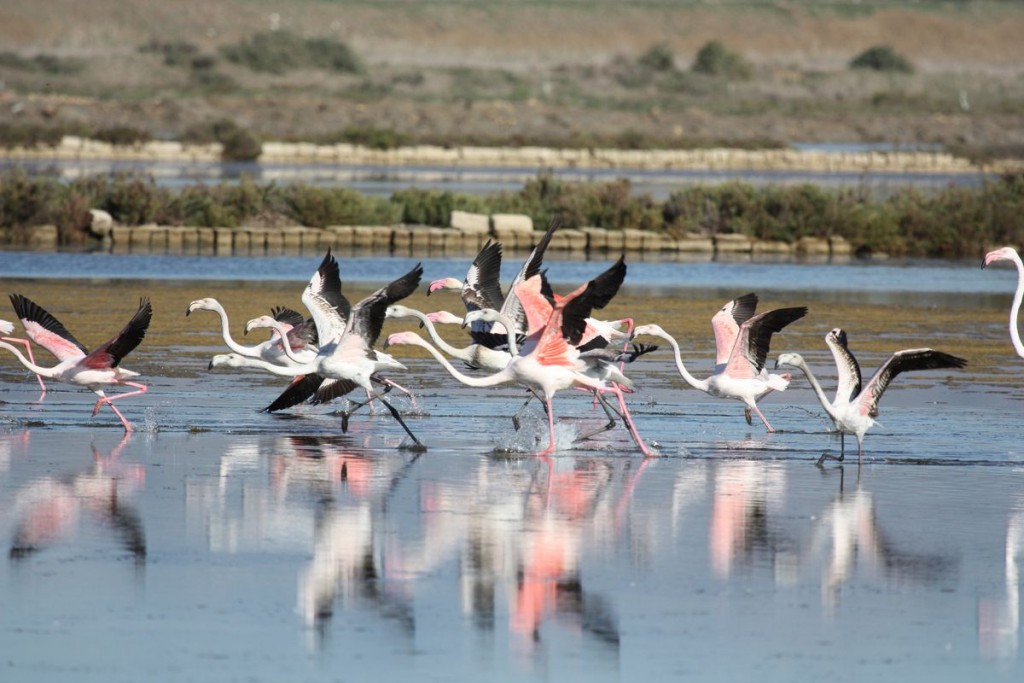The Reserve
The RNO Saline di Trapani and Paceco was established in 1995 with DA n. 257/44 of 11 May and entrusted to WWF Italy.
The protected area falling within the municipalities of Trapani and Paceco with a total extension of about 1000 hectares, is divided into 2 zones, of which 700 ha of zone A, coinciding with the salt pans, and about 300 ha of zone B.
Throughout the protected territory there is a regulation of use and prohibitions.
Due to their high environmental value, the salt pans are subject to various protection restrictions: with the Ministerial Decree of 4 April 2011, the Ministry of the Environment declared the wet area of the ‘Saline di Trapani’ reserve. and Paceco site ” of international importance ” under the ” Ramsar Convention “. According to the Habitats Directive, they are also included among the Sites of Community Interest, as well as among the Special Protection Areas provided for by the Birds Directive.
Among the relevant habitats present, we mention:
– Coastal lagoons (Natura 2000 code: 1150, priority habitat)
The basins used for the extraction of salt, given the techniques used (which are the traditional ones in use for centuries) and the particular geomorphology of the coast (which saw the presence of lagoons and coastal marshes), constitute an environment that, albeit largely artificial, it hosts a great biological diversity, from the microscopic level of bacteria to the macroscopic level of birds. They are extremely specialized organisms for this environment, and for the various degrees of salinity present in the different tanks, or (as in the case of birds) that find rest and food in this environment during migrations.
– Mediterranean salt steppes (Limonietalia) (Natura 2000 code: 1510, priority habitat)
Vegetable associations rich in Limonium species (of which many endemic) with the presence of Lygeum spartum, on soils temporarily or periodically permeated by brackish water and subject to extreme summer dryness.
– Annual vegetation of marine deposit lines (Natura 2000 code: 1210)
– Mediterranean and thermo-Atlantic halophilic fruit groves (Sarcocornetea fruticosi) (Natura 2000 code: 1420)
La Flora
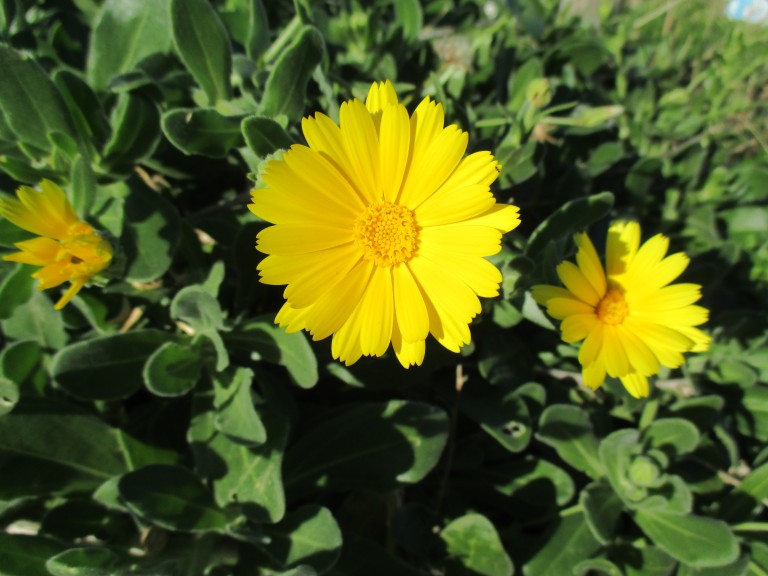
Among the characteristic species of the Reserve, the endemic Marigold maritima (opposite) is one of the most precious. Its range is in fact limited to the coastal area between the Stagnone di Marsala and the Pizzolungo area, just north of Trapani. The Ronciglio Island (today connected to thethe mainland from the salt pans, and falling within the boundaries of the Reserve) constitutes one of its “classical loci”: the description of this species was made on the basis of plants from this locality. Its ecological preferences lead it to occupy a narrow coastal strip , close to the accumulations of beached Posidonia. A real “attraction” of the Reserve is the so-called “Mushroom of Malta”, which in reality is not a fungus but a parasitic plant (Cynomorium coccineum L.). It is a rare species: in Italy, in addition to the area between Trapani and Marsala, it is possible to observe it only in a few coastal areas of Sardinia and Basilicata.
LIFE15 NAT / IT / 000914 called “CalMarSi”
The actions of the LIFE project for the protection of the Marigold maritima , the beneficiary of the project is the CNR of Palermo. As part of the project, the eradication of the alien species was carried out Carpobrotus sp .. and population implementation in new areas such as the Calcara salt mine. From a regulatory point of view, an important action was the issue of the DPRS, having as its object “Provisions for the protection of the floristic species Calendula maritima Guss
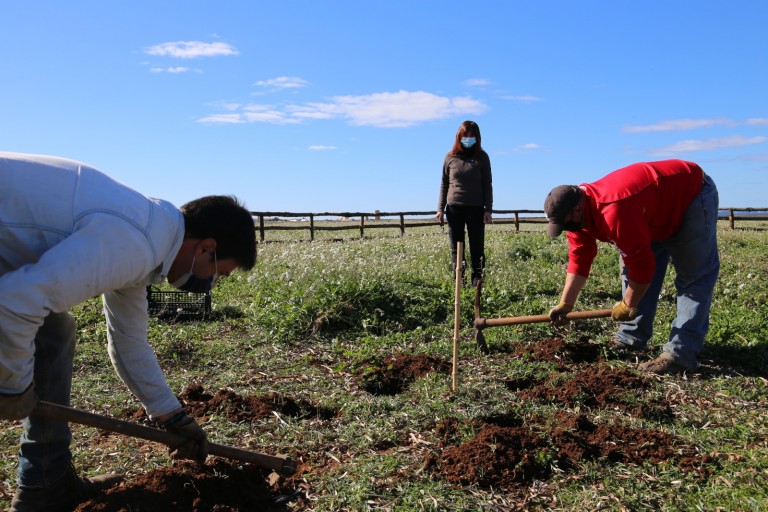
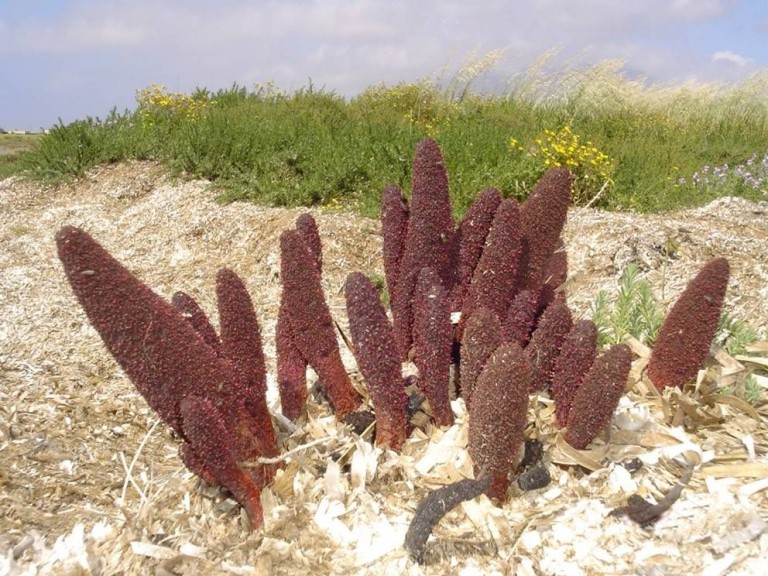
The highly salty environment of the salt flats is the kingdom of the Chenopodiacee: along the banks of the salt flats and in the temporary brackish marshes this family of seagrass plants displays its richness of halophilous species belonging to numerous genera (Salicornia, Arthrocnemum, Halopeplis, Halocnemum, Suaeda, Salsola, Atriplex, Halimione, Beta). These are herbaceous species or small shrubs, able to grow in this environment (particularly “extreme” due to the presence of salty soils) thanks to different adaptation mechanisms: many of these plants have fat leaves, where water is accumulated by osmotic effect, and from which excess salts are “expelled”. Numerous environments are also present in the Reserve, each of which corresponds to different plant communities and different plant species: fresh water streams, marshes and wetlands of fresh water, beaches, ephemeral lawns, brackish grasslands. Interesting plant communities are also present in the salt pans and channels, with the presence of marine phanerogams such as Ruppia drepanensis and Posidonia oceanica. Remarkable is the presence within the boundaries of the Reserve of various rare plant species, included among those most vulnerable to the risk of extinction in the “Red Book of Plants of Italy”:
Specie | Famiglia | Areale di distribuzione |
| Halocnemum strobilaceum (Pallas) Bieb. | Chenopodiaceae | Sud-Mediterraneo (in Italia solo in Sicilia e Sardegna) |
| Halopeplis amplexicaulis (Vahl) Ung.-Sternb. | Chenopodiaceae | Sud-Ovest-Mediterraneo |
| Aeluropus lagopoides (L.) Trin. | Graminaceae | Sud-Mediterraneo-Turaniano (in Italia solo in Sicilia e Lampedusa) |
| Limoniastrum monopetalum (L.) Boiss. | Plumbaginaceae | Sud-Ovest-Mediterraneo |
| Limonium ferulaceum (L.) Chaz. | Plumbaginaceae | Sud-Ovest-Mediterraneo (in Italia solo fra Trapani e Marsala) |
| Calendula maritima Guss. | Asteraceae | (specie endemica) |
Among these, numerous rare species such as Halocnemum strobilaceum (Pallas) Bieb .; Halopeplis amplexicaulis (Vahl) Ung.-Sternb .; Aeluropus lagopoides (L.) Trin; Limoniastrum monopetalum (L.)
Boiss .; Limonium ferulaceum (L.) Chaz., In Italy distributed only between Trapani and Marsala And Marigold maritima Guss., An endemic species limited to the stretch of the Trapani coast between Marsala and Monte Cofano (TROIA & PASTA, 2004; TROIA, 2009).
In addition to these species, two should be mentioned Limonium strictly endemic ( Limonium densiflorum (Guss.) O. Kuntze e Limonium lojaconoi Brullo), a Sicilian-Sardinian-Corsican endemism ( Euphorbia pithyusa L. subsp. cupanii (Guss.) AR Sm.), And other rare species such as Triglochin bulbosum L. subsp. barrelieri (Loisel.) Rouy, Cressa cretica L., Limonium avei (De Not.) Brullo & Erben
La Fauna
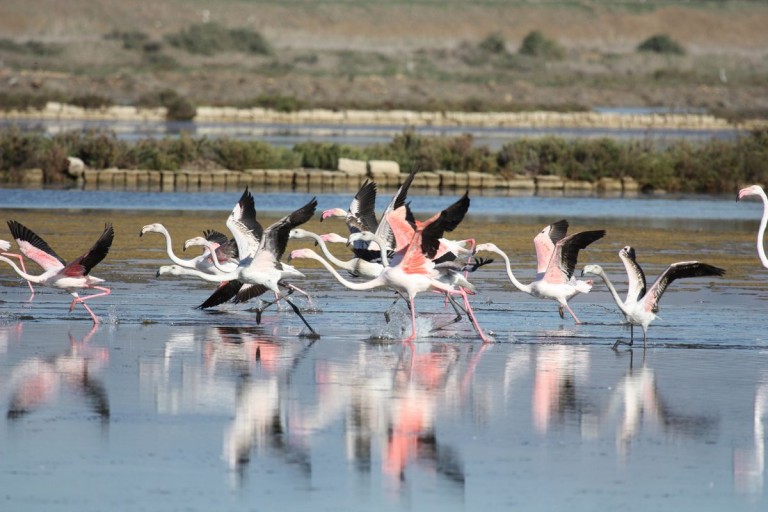
The salt pans of Trapani, thanks to their strategic geographical position, are a very important and irreplaceable resting and feeding place for the species during their spring and autumn migration. In the last hundred years there has been a drastic reduction of wetlands in the Trapani area; the deterioration or disappearance of these sites can have devastating effects on migratory birds, causing the decline of their populations due to reduced survival and decreased reproductive success.
For this reason, the area is of particular ornithological interest and to date 229 species have been counted, many wintering (flamingos, spoonbills, turnstones, stilt stalks, great white herons, marsh harriers, waders and various species of ducks) and other nidifiers (avocets, knights of Italy, friars, fratini, coots, water rails, moorhens, mallard, shelduck, calandrella, herring gull, in recent years egrets).
Among the species listed in Annex 1 of the Community Directive “Birds” (79/409 / EEC) and registered in the Reserve we remember the Bittern, the Little Egret, the Great White Heron, the Ruddy Shelduck, the Spatula, the Flamingo, the Knight of ‘Italy, the Avocetta (taken as a symbol of the Reserve), the Rosy Seagull, the Little Tern, the Kingfisher.
The RNO is also a site of national importance for Shelduck Tadorna tadorna, Redshank Tringa totanus, Common Gambecchio Calidris minuta and Rosy Gull Croicocephalus genei and is a site reported for Spatula Platalea leucorodia, Little Egret Egretta garzetta, Osprey Pandion haliaetus.
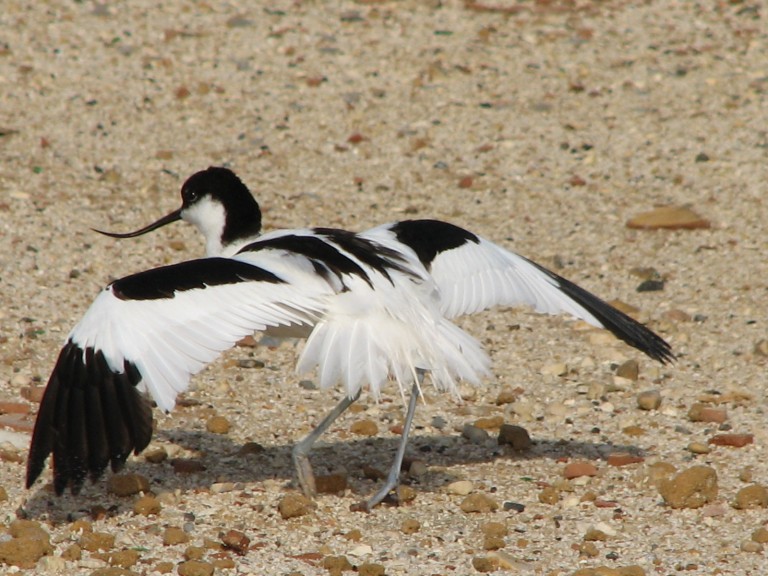
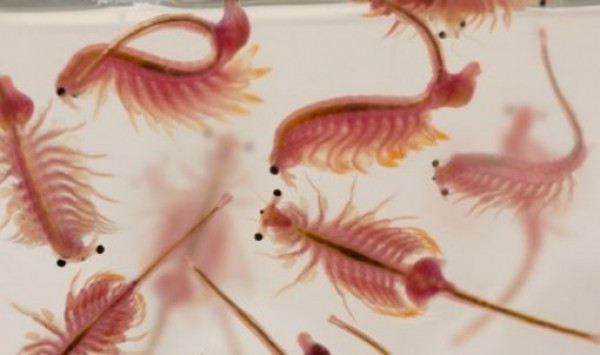
Among the fish it is present Aphanius fasciatus , included in Annex II of the EU Habitats Directive. The entomofauna includes numerous species of endemic and / or rare insects such as Cephalota circumdata imperialis, Cephalota Costiea goudoti, Pterolepis elymica, Teia dubia arcerii . Finally, the small crustacean Artemia salina it has been and still is the subject of great interest, both in systematic and pure research terms and applied research.
Main food of the pink flamingo, the artemia feeds on a small red alga, Dunaliella salina; this, especially in summer with the increase of ultraviolet rays, produces a large amount of a protective red pigment, which, thanks to a perfect food chain, passes from the alga to the shrimp and finally to the flamingo which after a few years will begin to manifest this pink color in its livery.
Platycleis decorana depranensis:
The grasshopper Platycleis (Decorana) drepanensis, an endemic species of the Saline di Trapani Nature Reserve, belonging to a brachyterus subgenus previously not known for Italy, but present with various species in North Africa, the Iberian peninsula and the Middle East.
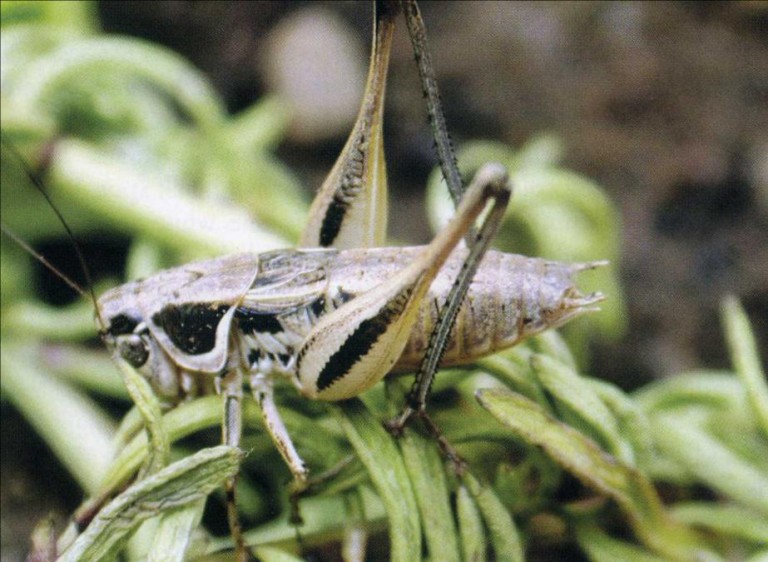

Teya dubia arceri:
A halophilous species closely linked to the saline area, where the nourishing plants that make up the salicornieto grow, and extremely at risk for its own biology.



